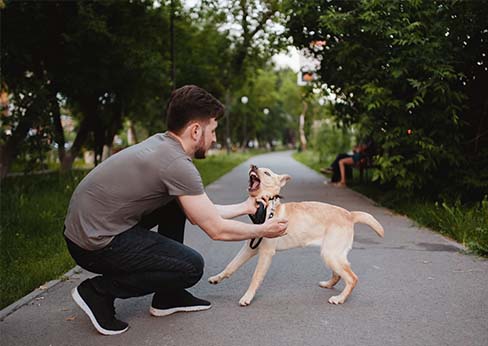In this post:
- Building trust with your dog
- Should you stop growling?
- Teach your dog to like being handled
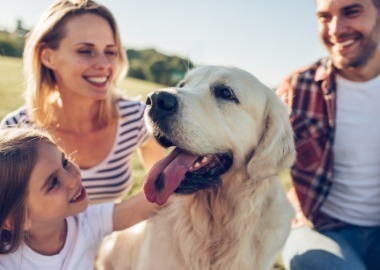
Kids and Dogs
Kids are usually the number one victim for dog bites. Because of this, we dedicated a whole article on how to teach your dog to like children and how to help your child understand dog behavior.
Building Trust with Your Dog: Understanding a Dog’s Economy
There are two main principles that need to be understood when learning about a dog’s trust:
- Dogs have an economy. The components of the economy are food, social outlets, and access to wants.
- Dogs learn through association and causality: x happens and then y follows as a result.
As owners, we have the food, we provide our dogs with social opportunities and stimuli, and we spend time with them which satisfies their physical and mental needs. When we spend time with our dogs and generate positive experiences, we earn ‘credits.’ When we yell at our dogs, hit them (which we should not do!), or just be generally negative to them, we take away from that relationship (i.e. earn debits’).
Dogs develop trust with their owners because the relationships are typically a net positive. If we want a dog to move and they are feeling lazy, we can physically push or pick them up without repercussions because our dog trusts us.
If your account is at a negative balance, your dog can and will retaliate – bite!
However, if a stranger were to do the same thing, a dog may react adversely because they have not developed trust with that person. The relationship account between the stranger and the dog was new, or at a net-zero, and the stranger moving the dog pushed the account into overdraft. Fearful, the dog may react in the form of biting.
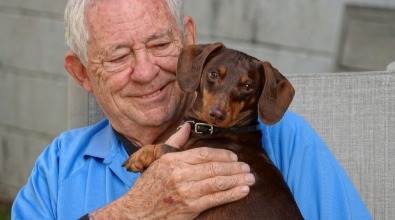
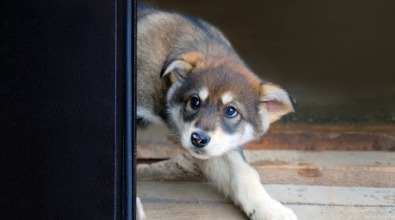
Knowing that dogs work like an economy, the causality piece is what dogs learn in response to said actions.
If a dog is hit, they may associate a raised hand to the action of being hit. You as the owner may have built up enough ‘credits’ with your dog to prevent retaliation, but a stranger may raise their hand towards your dog in a non-violent way (perhaps before he goes to pet your dog) and your dog, thinking that they are about to be hit, responds adversely in the form of biting.
There is no trust between the stranger and your dog, and so your dog has no reason to think that the stranger is friendly or not a threat. That is when a dog will bite!
In summary, consider your actions and the ways your dog may associate those actions with consequences. Negligence may lead to aggression when your dog tries to proactively defend themselves from strangers with whom they have no previous relationship.
Should you stop growling?
A dog growls to communicate that they are uncomfortable. With consideration to a dog’s energy, some dogs (especially younger or more courageous pups) may misread another’s body language and believe that the other dog welcomes their presence. Humans can tell another person to “stop”, “back off”, or “go away” and even communicate why (“you are in my personal space.”) But dogs, unable to verbalize their discomfort, use their growl to send similar messages, both to other dogs and humans alike.
Admittedly, growls sound scary to humans.
Since dogs cannot express why they are growling, unfamiliar owners can misunderstand growls to be signs of aggression or intimidation. As a result, owners may reprimand their dog for growling.
When owners yell at their dog for growling, they take away their dog’s ability to express their discomfort. The dog, as a result, needs to escalate their actions to send the same message which may include snapping or biting. When you remove the dog’s ability to tell someone when they have had enough, you can create a dog that “bites out of nowhere”.
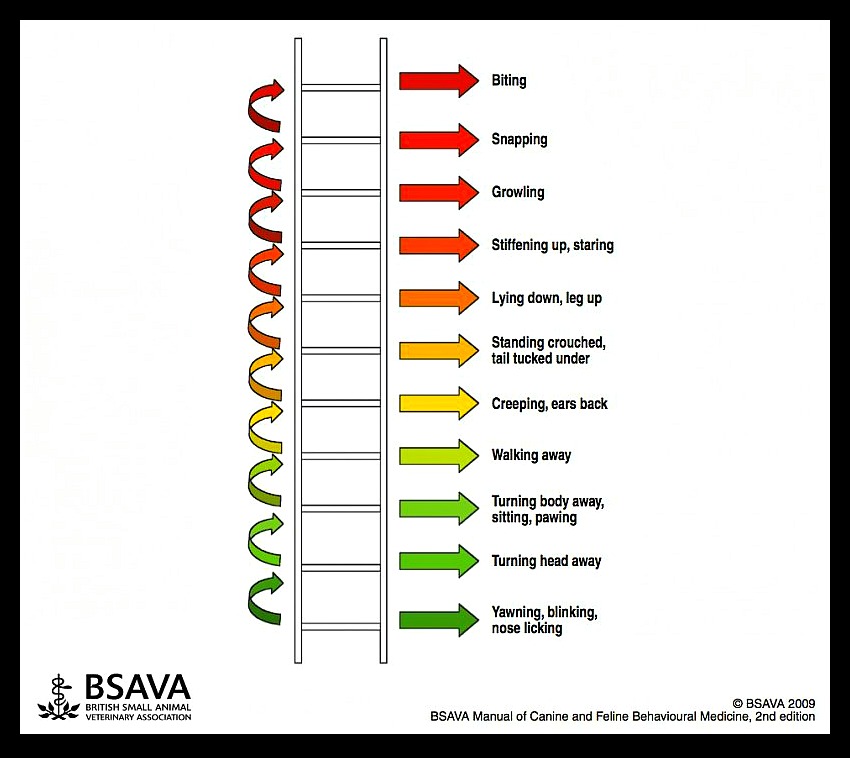
Ladder of aggression: A dog bite never happens out of the blue! They provide many warning signals along the way to try to get you to stop the uncomfortable situation. If you keep punishing your dog or ignoring the warning signs in the beginning, your dog has no choice but to escalate!
My favorite (being sarcastic) are the videos of dogs growling while a child pulls on their tail (or lays on them). The parent thinks it is so funny that they stand and film – there are so many online. That poor dog is trying to tell you that he or she is uncomfortable and will soon have no choice but to correct the child. I bet the headline will be “Family dog snapped out of the blue”.
If owners want to reduce their dog’s growl, they need to replace it with an appropriate substitute. If a dog is growling because it suffers from anxiety, the underlying cause of the social discomfort needs to be addressed rather than the growl. The situation needs to be stopped. These are areas where a dog trainer or behavioralist can be of assistance.
If your dog is growling and biting when being touched or picked up, you need to work on teaching him how to be handled.
Teach your dog to like being handled
Even if your dog is not a foo-foo and might never see a groomer, you have to get them used to being handled. Most bites happen when a stranger touches the dog on a spot that the dog doesn’t like, or a child pulling a tail, or a vet doing an examination. Here are steps that you can use for anything from grooming, to handling, to being pet.
Open Bar / Closed Bar:
This simply means that while your dog is being touched, he or she is getting a constant stream of treats. Once the handling stops, so do the treats. It is important to present the food right after handling starts so your dog doesn’t learn that food means bad things. Instead, handling means good things. This works best if you have a helper.
Pay As You Go:
This is where you give a treat after each simple step. This is best if you are alone or your timing needs work. For example, say your dog doesn’t like his paw touched. You will first maybe reach toward the paw – treat. Do this a bunch of times. Next, maybe we can quickly touch with a finger – treat and repeat. Next, we leave our finger on paw a little longer – treat and repeat. Slowly work your way up to holding the paw and maybe one day, cutting nails!
- Ears: handling the ears, manipulating them to look inside and cleaning them
- Mouth: lifting the lip to examine the teeth, opening the jaws to look inside, giving an oral liquid or tablet (you don’t have to medicate your dog to test, just open the jaws)
- Collar: grasping the collar and applying gentle pressure to guide the direction of the dog in an emergency, leaning over the head to grasp the collar
- Legs/Feet: running hands down all limbs, handling the paws, handling each toe, trimming toenails
- Tail: lifting the tail to examine anus region
- Grooming: brushing all areas of the body, using electric clippers in breeds that require clippers to groom
- Body: touching anywhere on the chest and abdomen, hugging around chest, hugging around abdomen
If you are struggling with any of this, contact a positive reinforcement trainer – they are experts in counter-conditioning and desensitization.
Final thoughts:
Trust is the cornerstone of bite prevention. Generally speaking, a dog will not bite someone who they trust. Earn a dog’s trust by developing a relationship with it centered around a happy life: your dog should be fed, have social stimulation, and have their wants and needs met. Dogs who bite are lacking in one of these areas, and they bite as a result of associating an action with feeling threatened. Owners care and love their dogs – that much we all can assume – but dogs learn by watching how one thing affects another. Teach your dog that they will be safe around you and practice the interactions that they may have with strangers. This will reduce the risk of biting as they will know what to expect.
Special thanks to:

Deirdre ‘Little Darling’ Franklin, MSPP
Deirdre “Little Darling” Franklin is the founder, president, and soul behind Pinups for Pitbulls. She holds a master’s degree in public policy from Drexel University, where she specialized in breed-specific legislation. She is also the Volunteer & Foster Manager for the ASPCA Behavioral Rehabilitation Center in Weaverville, NC.
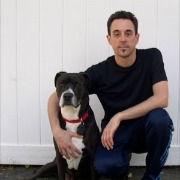
Drayton Michaels, CTC
Drayton Michaels, CTC is the owner of Urban Dawgs Dog Training in Red Banks, NJ. He also holds a Certification in Dog Training and Behavior Counseling from the San Francisco SPCA Academy for Dog Trainers.





